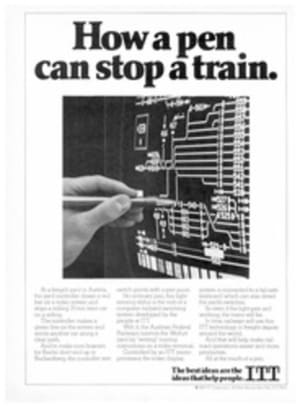
Meet Fräulein Longlegs
In the vast indoor skating arena of Dresden's Sportclub Einheit, three small children are carefully tracing loops and figure eights, an enchanting sight in a place so cold and forbidding. Outdoors, on the speed skating oval, three women in slick blue racing skins scoot around the polished rink. About it are patches of snow, and the smell of yeast wafts over from a nearby brewery. It is on these two rinks, indoor and out, that Karin Enke, East Germany's most successful speed skater and the favorite for four gold medals at Sarajevo, has spent much of her 22 years.
It's easy to pick out Enke among the three speed skaters because at 5'9¼" she's the tallest, striding powerfully with long legs. Although she carries her height with grace, if she'd had the choice, she would never have grown so tall. In February of 1978, when she switched from figure skating to speed skating, she was a gangly 5'8¼" and weighed 137 pounds. As a figure skater she had towered over her dainty little peers and had become so awkward she was almost unable to execute her jumps, which once included two triples. And when Enke showed up on the speed skating oval, they laughed because she was so thin and ill-coordinated. Still, coach Rainer Mund took her under his wing. "First of all," he told her, "you're going to eat." Eat she did. Today her ideal competitive weight is 160.
Enke was born and raised in Dresden, where her father, Werner Enke, was an engineer and production manager at a large company manufacturing electrical appliances. He earned a comfortable living, so that her mother, Marianne, didn't have to work while bringing up Karin and her older brother, Holger. The children made daily trips to the skating arena at the Sportclub. Holger lost interest in the sport, but Karin carried on. At eight she was selected to attend the Kinderund Jugendsportschule of Dresden, one of the special schools affiliated with sports clubs to provide young athletes with an academic program arranged so it wouldn't conflict with their training regime. Last year, at age 21, Enke finally graduated with the equivalent of a high school diploma. "With the special school plan you can't make it any faster," she says. She's now studying at the Technical University in Dresden.
In 1975 Enke won the figure skating competition in her 13-to-14 age-group at the Berlin Spartakiade, usually a harbinger of an Olympic medal. It was, but in the wrong sport. Two years later, her height had become an obstacle, and at the European championships she bungled her free-skating routine and finished a disappointing ninth. She asked officials of the Sportclub whether she could try out for speed skating, but got a firm nein. By now she had come to dislike figure skating. "I didn't like the ballyhoo," she says, "the acting, the playing to the audience, the starring role." After the 1977 season she had surgery to have a bone spur removed from her right elbow and never regained her skating form. By February 1978, even club officials had to admit they'd have to try her in another sport. Speed skating was the obvious alternative.
Two weeks after the switch, Enke was in her first race. "I didn't even know how to start," she says. "Coach said, just stand here and when you hear the gun, start racing. It was a 1,500 and I clocked a 2:32, which wasn't too bad." She didn't do too badly the following year, either. At the 79 Spartakiade, she finished second in both the 1,000 and the 1,500 and third in the 3,000. In 1980, in the sprints at West Allis, Wis., she won the first of her four overall world championships. A couple of weeks later at Lake Placid she became the Olympic 500-meter champion. In every European or world championship since, Enke has finished no worse than second overall. She is strongest in the 500 and 1,000 sprints and in the 1,500, though recently she has also done well in the 3,000.
This season she's really on a roll. In the G.D.R. championships in Karl-Marx-Stadt in December, she skated the fastest 500 meters ever at sea level—40.54—and set a stunning world record of 2:03.40 in the 1,500, smashing the old record of 2:04.04 established by Natalya Petruseva of the U.S.S.R. last March at the 4,800-foot altitude of Medeo, where the Soviets get all their world records. Never before had a world mark set at Medeo been broken at sea level.
Enke has never fallen in competition, which is an unusual feat in itself. "I got surefooted from all the jumping in figure skating," she says. Mund, however, points out that her long legs still cause problems. "She has difficulties holding her speed in the turns," he says. "She needs to be very strong there."
"I don't like fast ice," says Enke, "because my legs run away from me."
Her height also prevents her from skating in a really low crouch, which would improve her aerodynamics, and it makes her a slow starter. "She only gets going after the first 100," says Mund, "but then Eric Heiden wasn't the fastest starter, either."
Last April during a brief vacation from skating, Enke tried to catch up on school-work. Her major is cultural studies, which she hopes will land her a job with an art gallery someday. She's especially fond of modern painters. "The old masters are for the eyes," she says. "They are beautiful. The new ones are for the mind. They are complicated."
When she was 19, Enke tried marriage—to an engineer. It lasted 1½ years. "He wanted me to stop skating," she says. "It's impossible to be with someone who doesn't understand."
As Mund says, "She's willing to sacrifice, but she's also a mensch."
PHOTO
A figure skater from childhood, East Germany's Enke switched to speed skating—and took off.
PHOTO
Enke stands out on the streets of Dresden.

